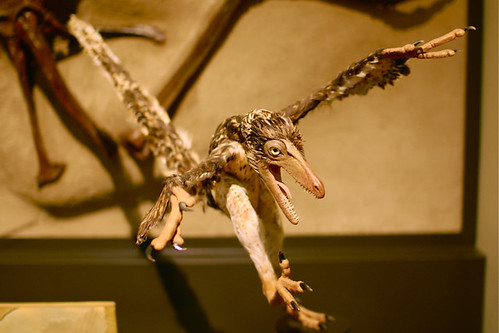As if the sickle claw wasn’t enough
Sinornithosaurus was a small member of the dromaeosaurid family of dinosaurs — i.e., the raptors (think Deinonychus and Velociraptor). They were agile, fast predators with sickle-shaped claws — and, it increasingly seems, feathers: in 1999, a Sinornithosaurus millenii fossil was discovered in China with feather impressions, and other discoveries of fossil dromaeosaurids with feathers followed.
Now we may have to add another attribute to the feathers and the claws: a new study suggests that Sinornithosaurus was venomous. The researchers’ investigation found that “its upper teeth are grooved, long, and fang-like, and its upper jaw contained pockets that could have housed venom glands. These pockets are connected to the base of the teeth by narrow ducts.” If Sinornithosaurus was venomous, its fangs would have been more like those of a rear-fanged colubrid rather than a viper’s: venom flowing along grooved teeth, rather than being injected by ginormous, syringe-like front fangs.
Venomous snake dentition is still a rather new development in evolutionary terms, I guess, but venom itself may be 200 million years old, predating snakes, lizards and most of the dinosaurs.
Via io9. I took the above photo of a Sinornithosaurus model at the Canadian Museum of Nature in July 2008.
